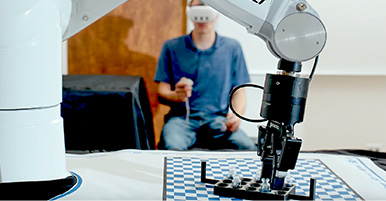Citation
Saha, B.; Honda, T.; Matei, I.; Saund, E.; de Kleer, J.; Janssen, W. C.; Kurtoglu, T.; Bobrow, D. G. Model-Based Approach for Optimal Maintenance Strategy. Second European Conference of the Prognostics and Health Management Society 2014.; Nantes, France. Date of Talk: 7/8/2014
Abstract
In this paper we introduce a novel model-based reliability analysis methodology to guide the best maintenance practices for the different components in complex engineered systems. We have developed a tool that allows the system designer to explore the consequences of different design choices, and to assess the effects of faults and wear on critical components as a result of usage or age. The tool uses pre-computed simulations of usage scenarios for which performance metrics can be computed as functions of system configurations and faulty/worn components. These simulations make use of damage maps, which estimate component degradation as a function of usage or age. This allows the designer to determine the components and their respective fault modes that are critical w.r.t. the performance requirements of the design. Given a design configuration, the tool is capable of providing a ranked list of critical fault modes and their individual contributions to the likelihood of failing the different performance requirements. From this initial analysis it is possible to determine the components that have little to no effect on the probability of the system meeting its performance requirements. These components are likely candidates for reactive maintenance. Other component faults may affect the performance over the short or long run. Given a limit for allowable failure risk, it is possible to compute the Mean Time Between Failure (MTBF) for each of those fault modes. These time intervals, grouped by component or Line Replaceable Units (LRUs), are aggregated to develop a preventive maintenance schedule. The most critical faults may be candidates for Condition-Based Maintenance (CBM). For these cases, the tool provides prior distributions of component failure that may be used in a Bayesian-learning or similar filtering/machine learning frameworks. The specific fault modes considered for CBM also guide sensor selection and placement.


